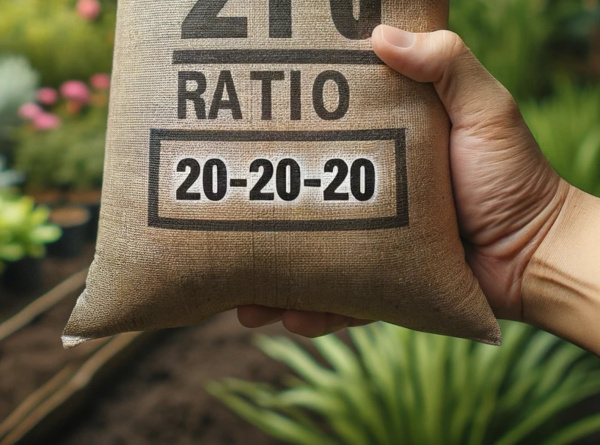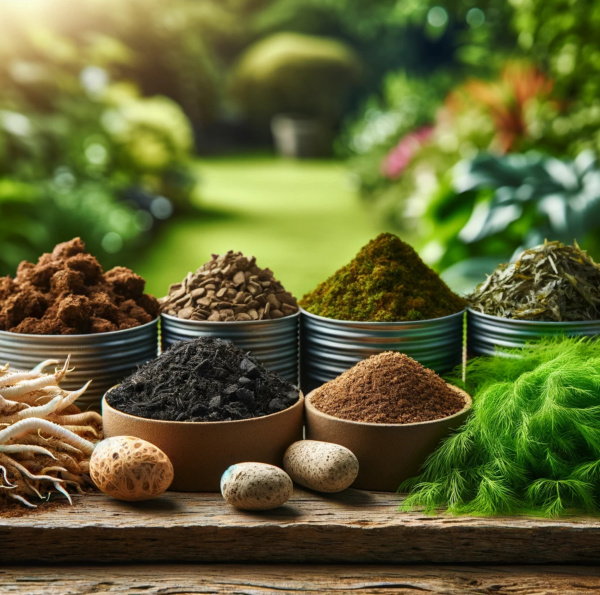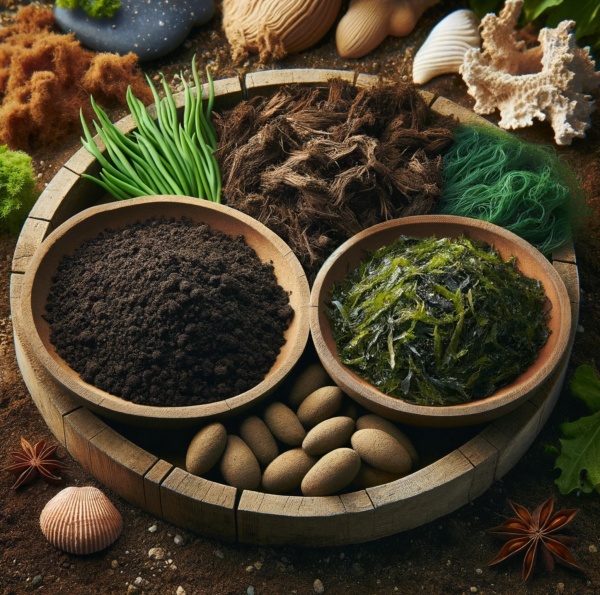
NPK Ratios Guide
Understanding Plant Nutrition, Growth, and Soil Health
When you stroll down the garden supply aisle, you're greeted by bags of fertilizer emblazoned with three bold numbers, commonly known as the NPK values. As you likely know, these figures are more than just random numbers; they're the key to unlocking the full potential of your garden.
In this article, we'll peel back the layers of what NPK really means and why it's a cornerstone of understanding for both the green-thumbed enthusiast and the novice gardener nurturing their first houseplant.
Our journey into the NPK values is not just about feeding our plants but ensuring they thrive by giving them precisely what they need.

The Basics of NPK
NPK stands for Nitrogen (N), Phosphorus (P), and Potassium (K) - the three macronutrients that plants require in significant amounts for growth and health.
Each letter represents a different element critical to plant development: Nitrogen for green leafy growth, Phosphorus for roots and flowers, and Potassium for overall health and disease resistance. Let's look at each in a bit more detail.

Nitrogen (N)
Nitrogen is fundamental to plant growth and health, acting as the primary building block of chlorophyll, the green pigment in plants responsible for photosynthesis.
It is also a key component of amino acids, the building blocks of proteins, which are crucial for the growth and development of plant tissues.
Nitrogen's role in photosynthesis makes it directly responsible for a plant's ability to use sunlight to produce sugars from water and carbon dioxide, fueling its growth.
A deficiency in nitrogen leads to stunted growth and yellowing of leaves, as the plant is unable to synthesize sufficient chlorophyll. Conversely, an excess of nitrogen can lead to lush, green growth at the expense of flowering and fruiting, as the plant focuses its energy on leaf production.
Thus, a balanced nitrogen supply is critical for optimal plant health and productivity, supporting vegetative growth and laying the foundation for successful reproduction and yield.

Phosphorus (P)
Phosphorus plays a pivotal role in plant energy transfer and photosynthesis, as it is a key component of ATP (adenosine triphosphate), the energy currency of cells.
This nutrient is vital for the development and health of roots, promoting vigorous root growth and enhancing the plant's ability to absorb water and nutrients.
Phosphorus is also crucial for the formation of DNA and RNA, the genetic building blocks that ensure cells can divide and grow, making it essential for seed germination, growth, and maturity.
Additionally, phosphorus supports the development of flowers and fruits, contributing to higher yields and quality in crops.
A lack of phosphorus can result in stunted growth, delayed maturity, and poor fruit and flower development.
Ensuring adequate phosphorus is available helps plants mature properly and contributes significantly to their reproductive success.

Potassium (K)
Potassium is key to overall plant health, involved in regulating various physiological processes, including water uptake, enzyme activation, and photosynthesis.
It enhances a plant's ability to withstand extreme conditions, such as drought, cold, heat, and diseases.
Potassium plays a significant role in the movement of water, nutrients, and carbohydrates throughout the plant, helping to improve drought resistance and reduce water loss. It also contributes to the strength of plant cells, increasing disease resistance and the quality of seeds and fruits.
A potassium deficiency can manifest as weak growth, poor yield, and brown scorching and curling of leaf tips.
Adequate potassium levels ensure strong vegetative growth and robust fruiting and flowering, making it indispensable for healthy plant development and productivity.
Together, NPK represent the three pillars of plant nutrition, each contributing uniquely to plant health, growth, and productivity. Balancing these nutrients according to plant needs is essential for sustainable gardening and agriculture practices, leading to vibrant growth, bountiful yields, and healthy ecosystems.
The numbers you see on a fertilizer package, like 20-20-20, indicate the percentage of each nutrient contained in the mix. However, it's crucial to understand that these percentages refer to compounds of these elements, not the elements themselves in their pure form.

Decoding the Numbers
Let's decode the numbers using a common fertilizer ratio: 20-20-20. This ratio tells you that the fertilizer contains 20% Nitrogen, 20% Phosphorus (as P2O5, phosphorus pentoxide), and 20% Potassium (as K2O, potassium oxide).
But here's where it gets interesting: the actual amount of elemental phosphorus and potassium is different from what the numbers suggest. The 20% P2O5 translates to about 8.8% actual phosphorus, and the 20% K2O is equivalent to about 16.6% actual potassium.
This conversion is crucial for understanding how much of these nutrients your plants are really getting. Fertilizers list P2O5 and K2O instead of pure phosphorus and potassium because these forms are more stable and easier for plants to uptake.

Importance of Understanding NPK Values
Knowing the NPK values of your fertilizer is like having a roadmap for plant nutrition. Each nutrient plays a pivotal role in plant development.
Nitrogen is the engine behind lush, green growth. Phosphorus supports strong root development and aids in the flowering process, while Potassium is the shield that helps plants resist disease and aids in water uptake.
A balanced fertilizer, like a 20-20-20, offers a general-purpose solution, providing equal parts of each primary nutrient.
However, different plants and growth stages may require different NPK ratios.
Understanding these values allows gardeners to tailor their approach, promoting healthier plants and more vibrant blooms.

Practical Tips for Using NPK Knowledge in Gardening
Armed with knowledge about NPK, gardeners can make informed decisions about fertilizing their plants.
Before applying fertilizer, conduct a soil test to determine which nutrients are lacking. Choose a fertilizer that complements your soil's needs and the specific requirements of your plants.
For instance, a high-nitrogen fertilizer is great for leafy greens, while blooming plants may benefit from a formula higher in phosphorus. Apply fertilizers according to the package instructions to avoid over-fertilization, which can harm plants and the environment.
By understanding and applying NPK values appropriately, gardeners can enhance soil fertility, boost plant growth, and achieve a more productive garden.
Conclusion
The NPK values on fertilizer packages are much more than a trio of numbers; they're the foundation of plant nutrition and health.
By understanding what these numbers mean and how to apply them to your garden, you can unlock the full potential of your plants.
Whether you're adjusting soil conditions or catering to the specific needs of your plants, a solid grasp of NPK values empowers you to garden more effectively, leading to lush, bountiful results. Remember, the best gardener is an informed gardener.
Let the knowledge of NPK be the tool that guides you to gardening success.


